Analysis: How images of the 2011 tsunami in Japan led me to examine connections with water in photography, sound and sculpture
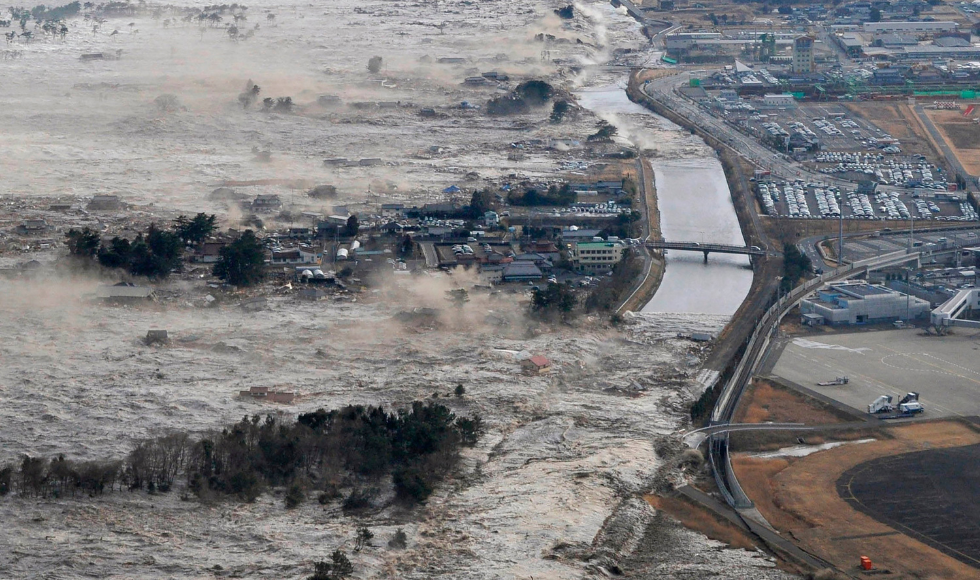
An earthquake-triggered tsunami sweeps shores along Iwanuma, Miyagi prefecture, northern Japan, March 11, 2011. (Kyodo News via AP, File)
BY Chris Myhr
March 20, 2023
In everyday language when we describe something as “salient” we mean what’s most central.
In geography, a “salient” is a prominent feature in a landscape, like an iceberg breaking the surface of the sea. The word “salient” also has affinity with “saline”: both come from the Latin word for salt.
Salients is also the title of an exhibit which is a retrospective of my artwork. The exhibit brings together photography, sound and found objects from projects, developed over a decade, that revolve around our complex interrelationships with water.
The catalyst for this trajectory in my studio practice was the Tōhoku earthquake and tsunami that struck the east coast of Japan in 2011.
I lived and worked in Tokyo from 1998 to 2006, and witnessing the images of what’s sometimes known as the 3/11 disaster, as well as the resulting global reverberations, led to a fundamental shift in my world view.
It also catalyzed a dedicated move in my research and art production toward issues surrounding water, complex interconnectivity and the ways in which the ocean and its tributaries shape culture, industry and the collective imagination.
Source of life, destruction
Much of my work since Tōhoku has explored the contradiction or tension whereby
water acts not only as a constructive and generative influence — the source of all life on our planet, but also an agent of immense and unfathomable destructive power.
What struck me initially about images of the 3/11 tsunami was that it did not look as I had expected. Its form looked nothing like Katsushika Hokusai’s iconic painting Under the Wave off Kanagawa, also known as The Great Wave.
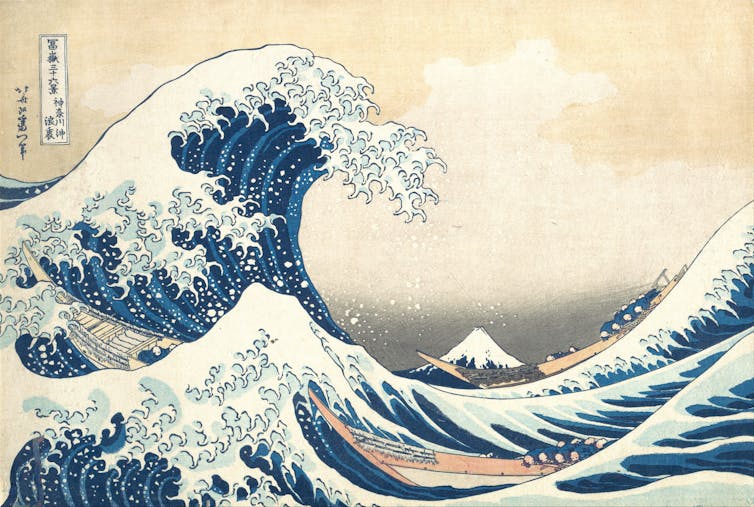
Nor did it look anything like depictions I had seen in disaster films.
There was no blue triangular shape, no white froth at the peak. Instead, the force of the earthquake manifested in a dark swell of water mixed with earth
that advanced inland without acceleration or deceleration.
The wave swept across the landscape effortlessly, pulling with it crushed cars, uprooted trees and buildings, as well as unimaginable things dragged along beneath the surface.
The sublime: awe, wonder, fear
There was something in the affect and aesthetics of these images that positioned them for me within the tradition of the sublime — a term from Euro-western philosophical and artistic discourse that has been evolving and morphing since at least the 17th century.
The etymological roots of “sublime” come from the Latin sublimis meaning “high up” or lofty. In the western history of visual art, the sublime is most frequently associated with the work of Romantic-era painters like Joseph Turner and Caspar Friedrich. Western curators sometimes also include Hokusai when exploring the sublime.
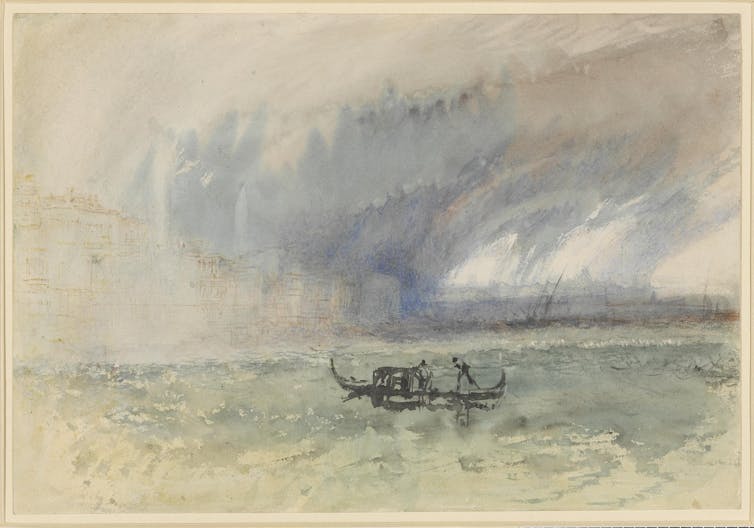
These artists attempted to articulate the visceral sense of awe and wonder — slightly tinged with fear — that one experiences when gazing upon the vastness of a starry sky, or a body of water stretching from horizon to horizon.
The sublime points toward certain modes of aesthetic, sensory and existential experience that exceed human thought and understanding.
Boundless networks of co-existence
Contemporary theory around the sublime extends the term to include machines and technology, vast networks of global communications and the internet.
In this sense, there is also something sublime about the ways in which the medium of water interconnects all things: it flows across borders and blurs delineations between local/global, micro/macro and human/non-human.
I am particularly invested in the work of contemporary philosophers such as Jane Bennett and Timothy Morton whose work challenges us to rethink the place of humans within these boundless networks of coexistence.
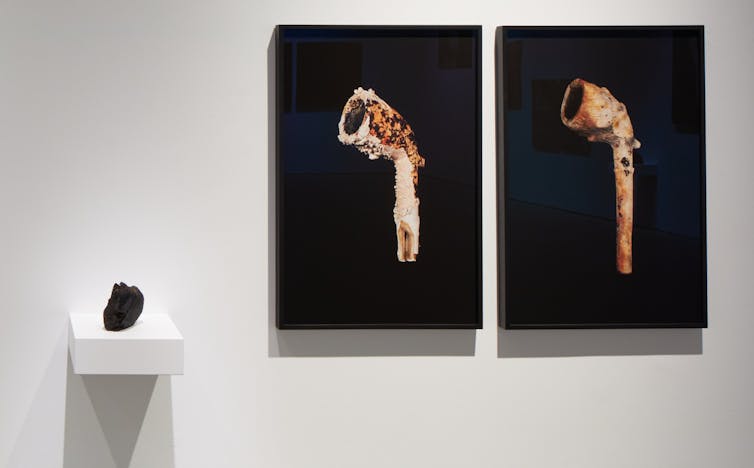
Pipes, glass vessels, algae, contaminants
The projects in Salients feature subject matter collected from four major Canadian water systems:
- mariners’ pipes and glass vessels dating back to the 17th century recovered from the sea floor off the coast of Nova Scotia;
- evaporated samples of toxic blue-green algae taken from blooms in Lake Ontario;
- hydrocarbon sediment from filtered samples of snow collected by scientists along the banks of the Athabasca River as it flows through the oil sands region of northern Alberta;
- similar contaminants washing up on the western shoreline of Point Pelee peninsula in Lake Erie, Ont.
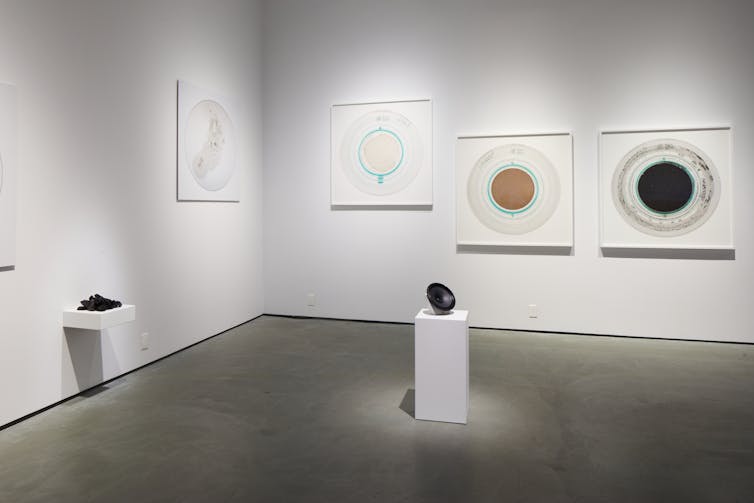
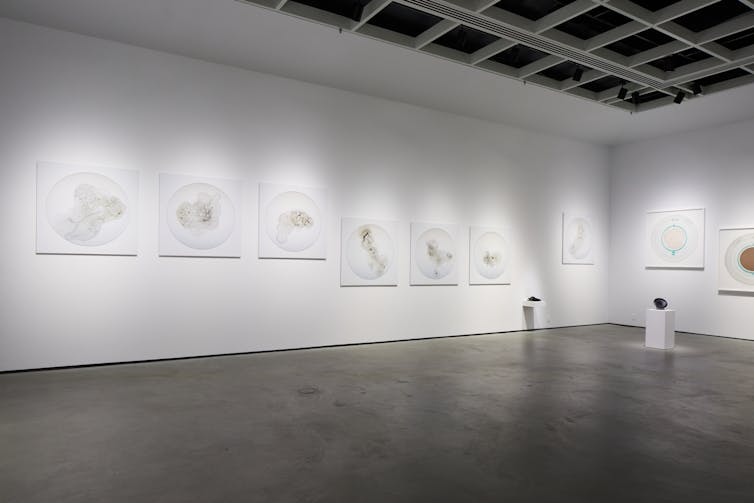
Irreducibility of matter
There are no direct representations of water in the Salients exhibition.
Returning to the idea of “saline,” what is seen in the exhibition is not so much the “solution” but the “salt” — stubborn matter that has refused to dissolve within the water system from which it was recovered.
Euro-western thinking tends to delineate between matter and energy. Yet — like energy — matter cannot be created nor destroyed. Instead, it moves and shifts from one form to another; from one location to another; from one body to another.
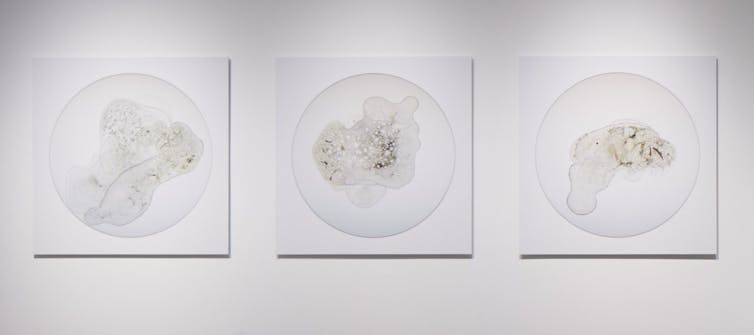
Although Salients images have been rendered through advanced digital imaging technologies, they ruminate not on ephemeral things like data or pixels but rather the sheer irreducibility of matter.
Our material legacies will certainly outlive our digital footprints.
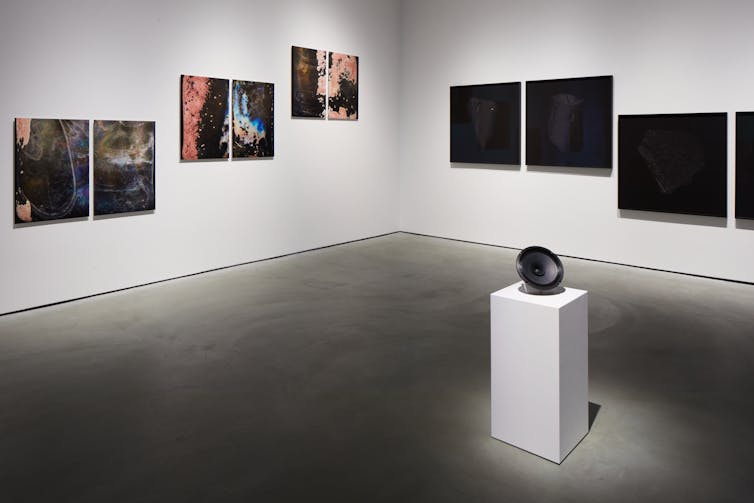
Sublime environmental challenges
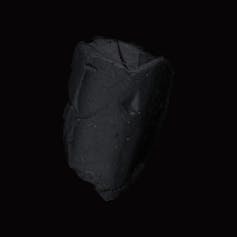
Bitumen falling from the sky in Fort McMurray, tar globs embedded in the sand along Lake Erie and microbial algae blooms visible from space gesture toward complicated and messy environmental challenges that will not dissolve smoothly within conventional frameworks of Euro-Western thinking.
There is no singular cause to these effects, and there will be no silver bullet solution to these problems.
It will take different frameworks of thinking: creative, inclusive and interdisciplinary thinking to deal with these issues which — in their vertiginous complexity and sheer magnitude — most certainly border on the sublime.
‘Salients’ runs until March 24 at the McMaster Museum of Art in Hamilton, Ont.![]()
Chris Myhr is an associate professor of Communication Studies & Media Arts, McMaster University. This article is republished from The Conversation under a Creative Commons license. Read the original article.


